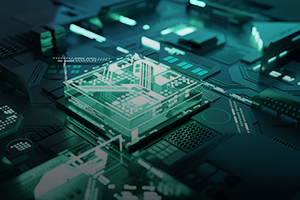Quantum Superconductor

Physicists recently discovered a new superconductor with unique properties that may make it ideally suited for use in quantum computers. Composed of a thin film of crystalline bismuth and palladium, the material — designated as β-Bi2Pd — is not only able to move electrons with zero resistance, but when shaped into a ring, it can simultaneously carry current in both clockwise and counterclockwise directions.
As we’ve mentioned in the past, traditional computer bits exist as either 0 or 1, while quantum bits (qubits) exist as both. So, the ability to circulate current in both directions may allow the newly discovered material to function as a qubit. In addition, qubits to date have required precise magnetic fields and can only be maintained for a miniscule fraction of a second. The superconducting flux qubit (as it’s been dubbed) requires no magnetic field, which would simplify the design and calibration significantly.
Although quantum computers are still years away, this advancement represents yet another step forward in making quantum computing a reality.
For information: Yufan Li, Johns Hopkins University, Department of Physics and Astronomy, Bloomberg Center for Physics and Astronomy, 3400 N. Charles Street, Baltimore, MD 21218; phone: 410-516-7347; fax: 410-516-7239; email: yli@jhu.edu; website: https://www.jhu.edu/ or https://physics-astronomy.jhu.edu/